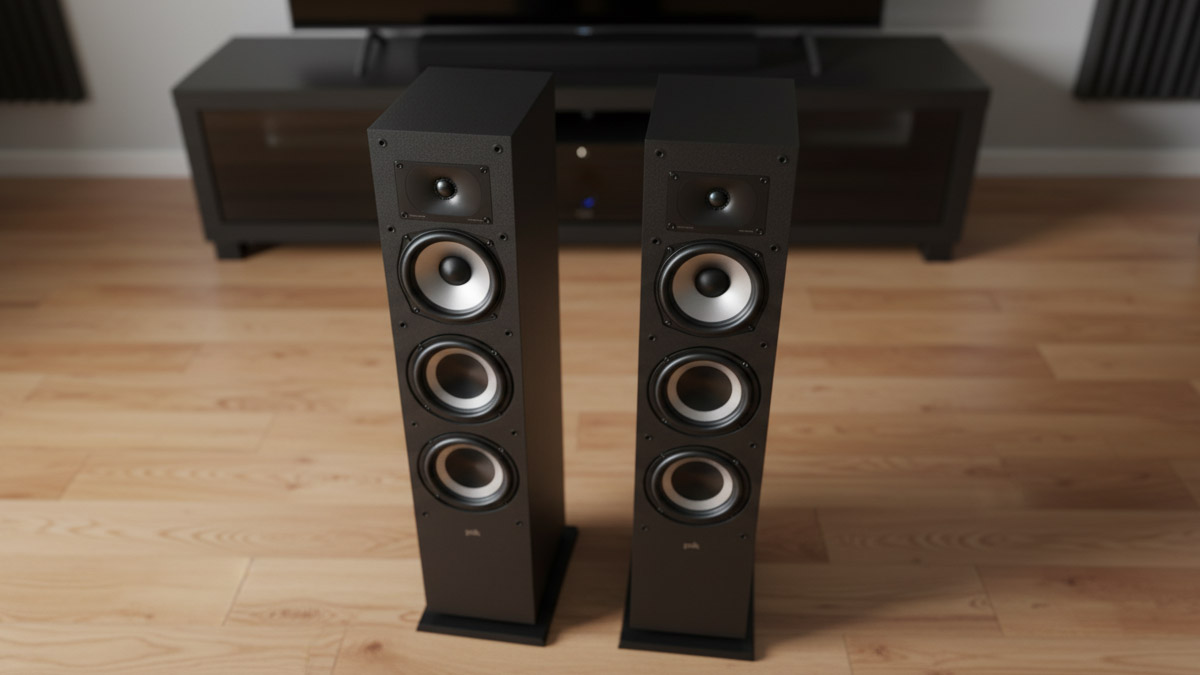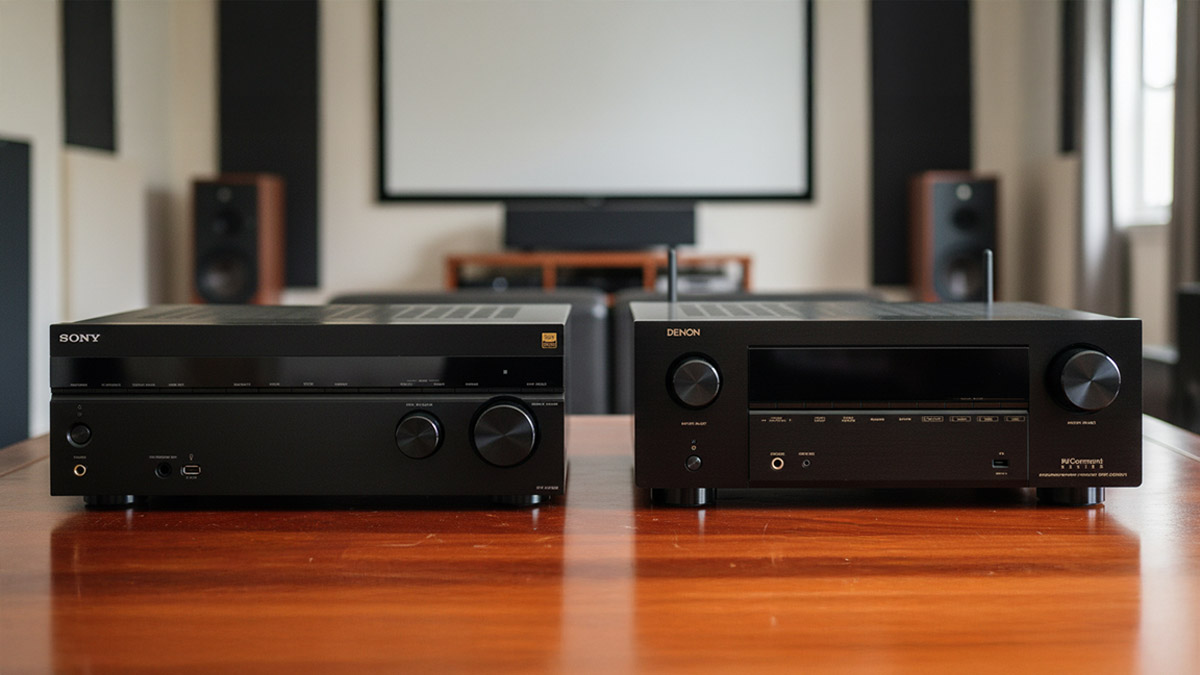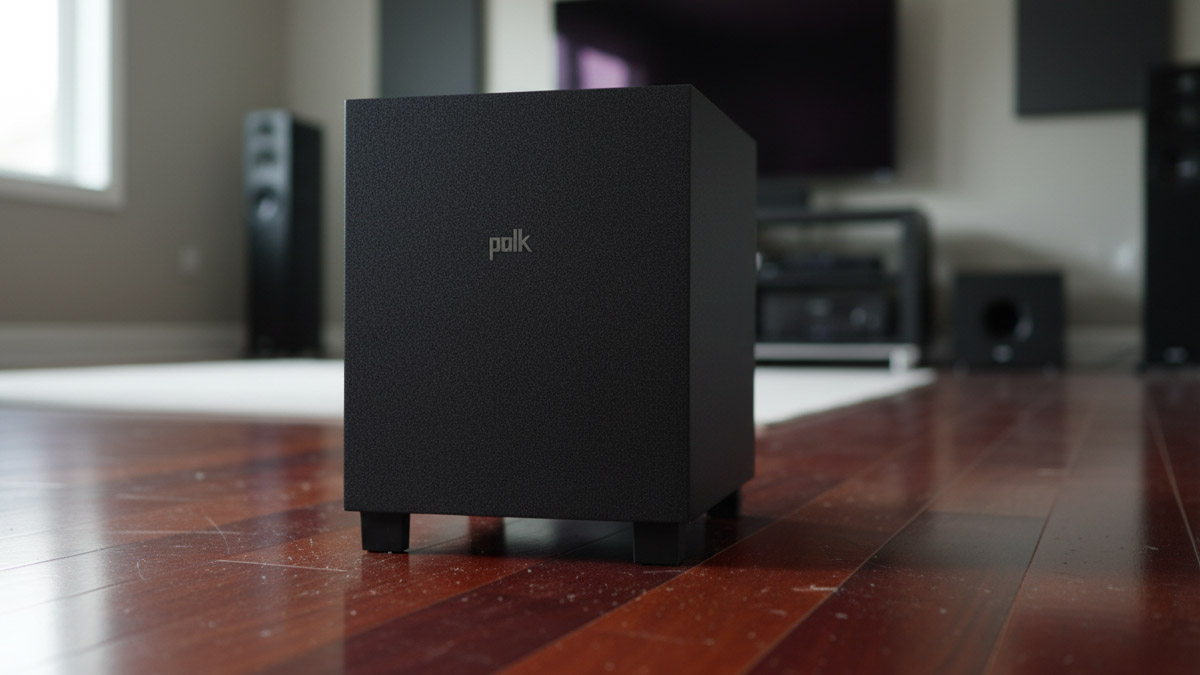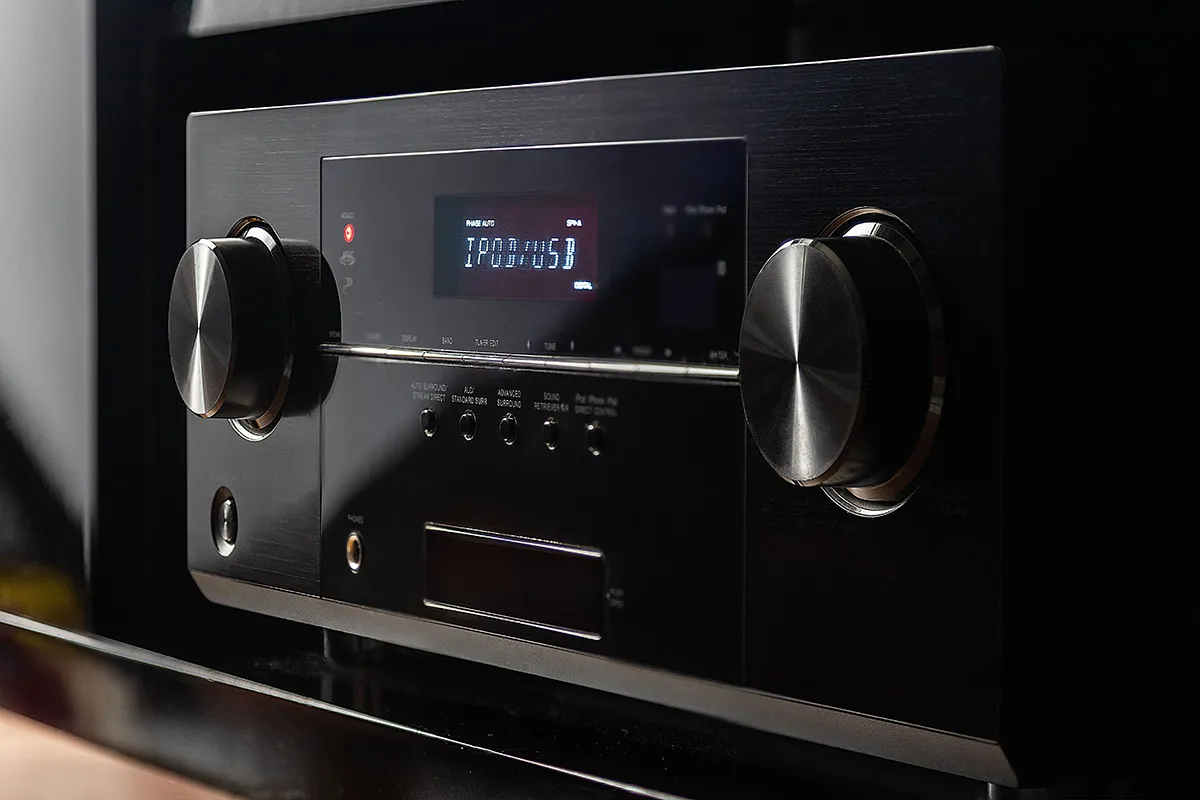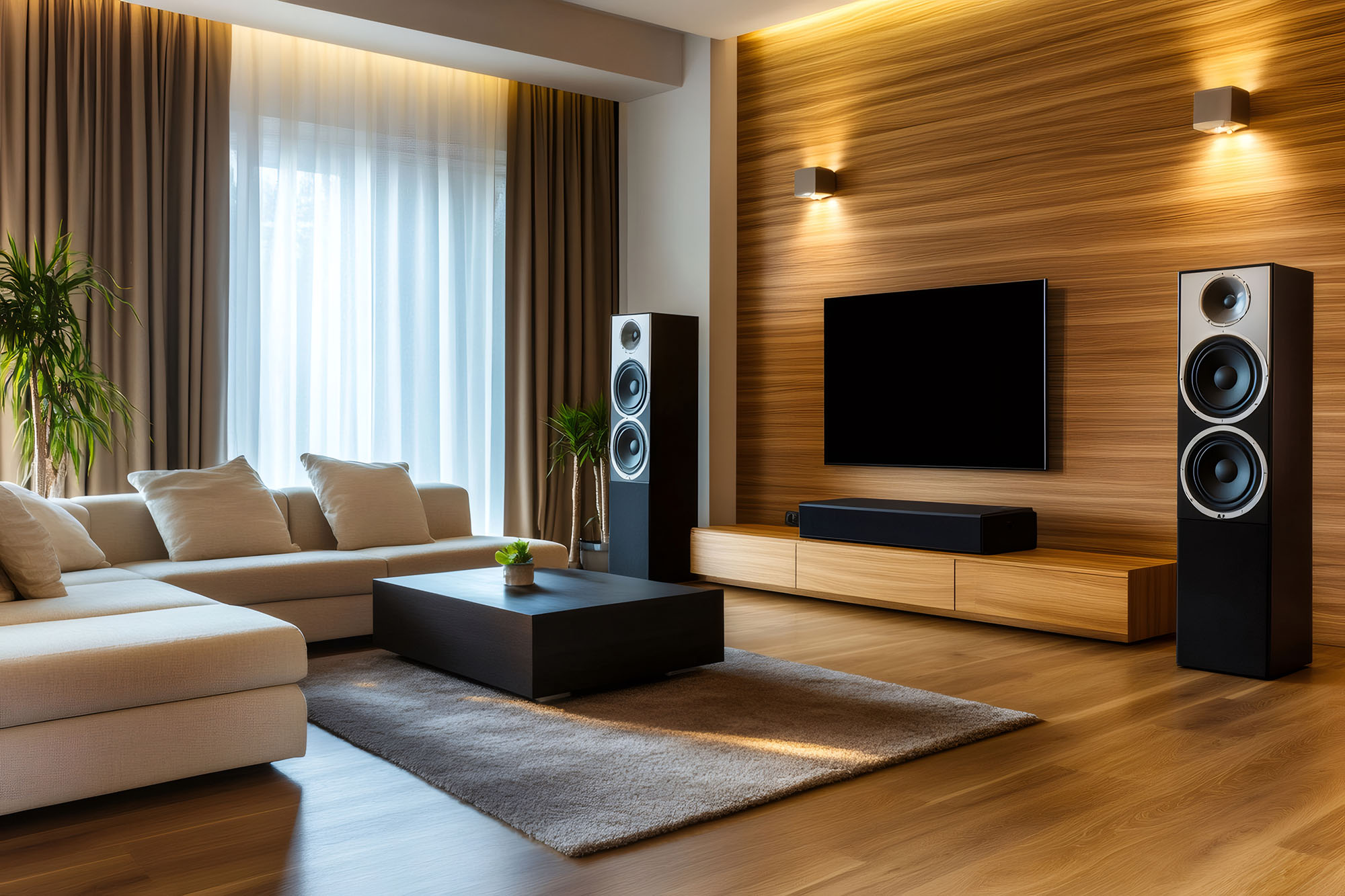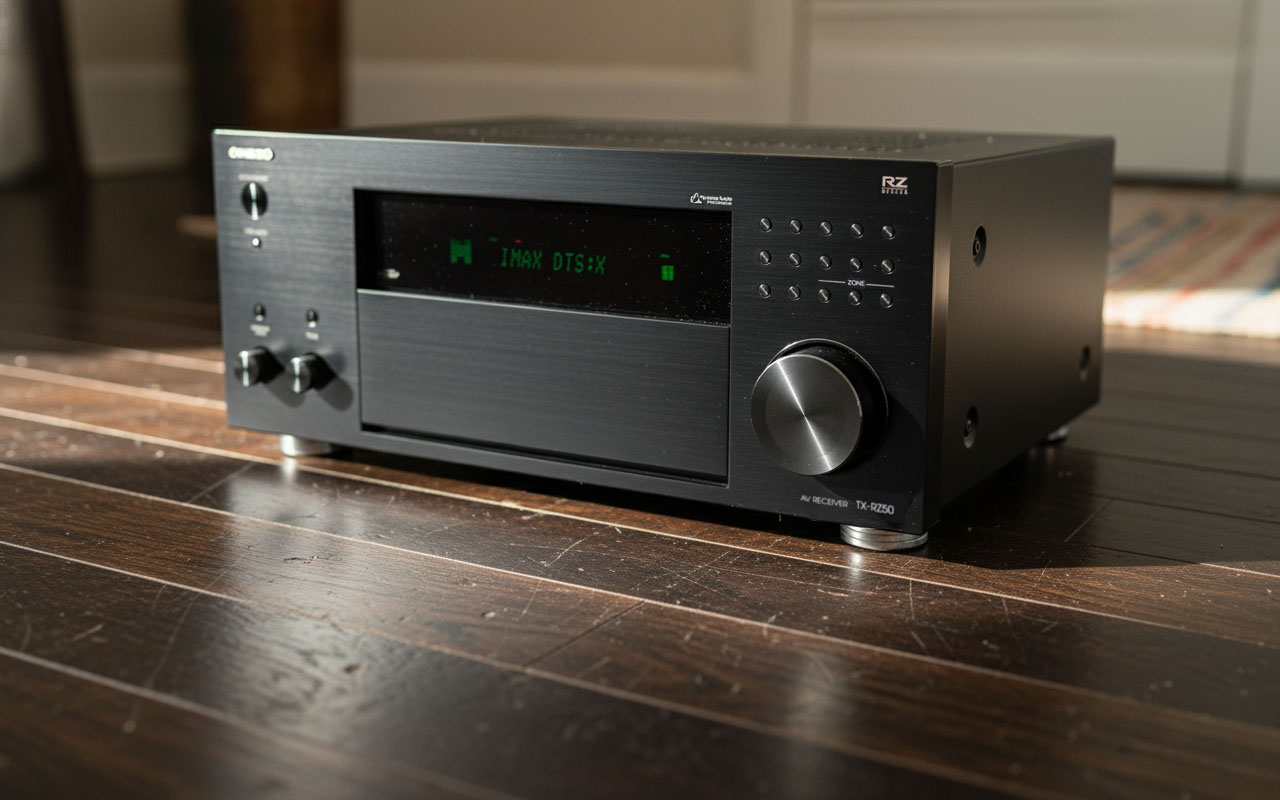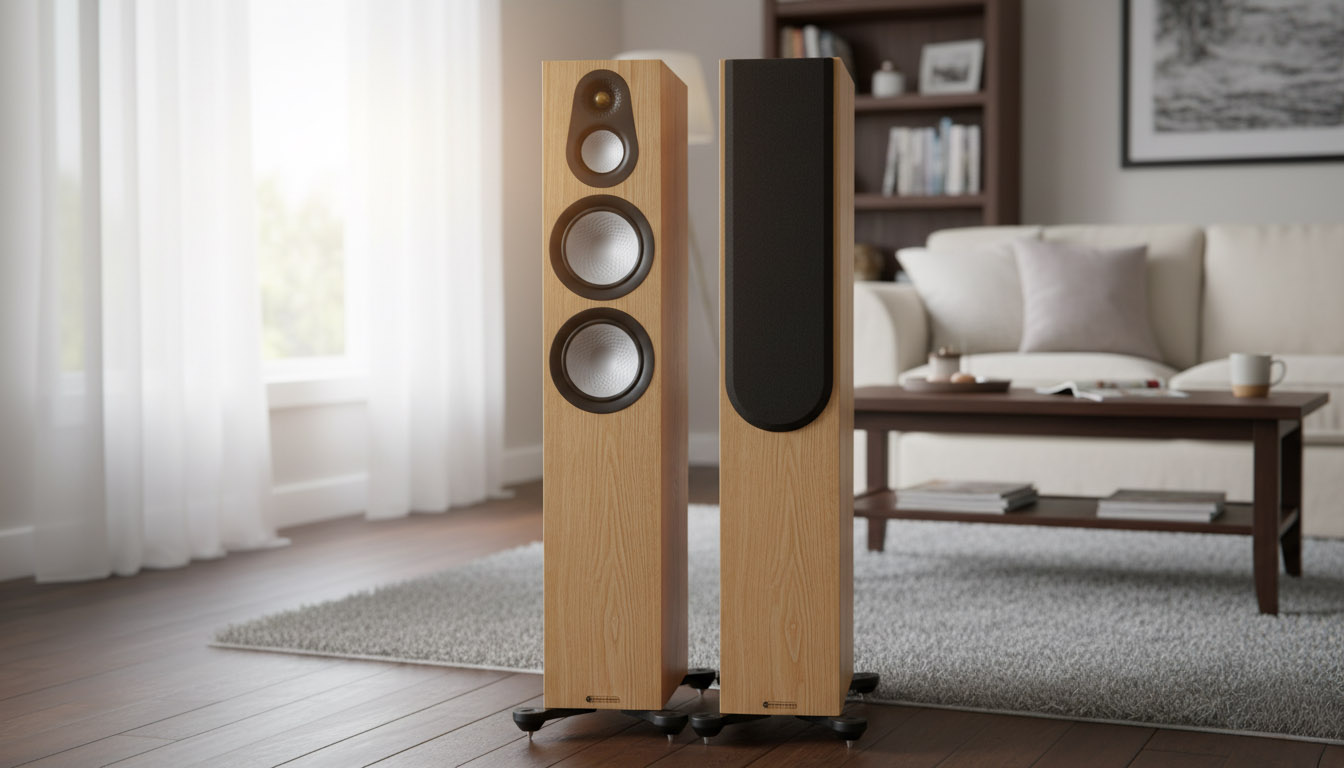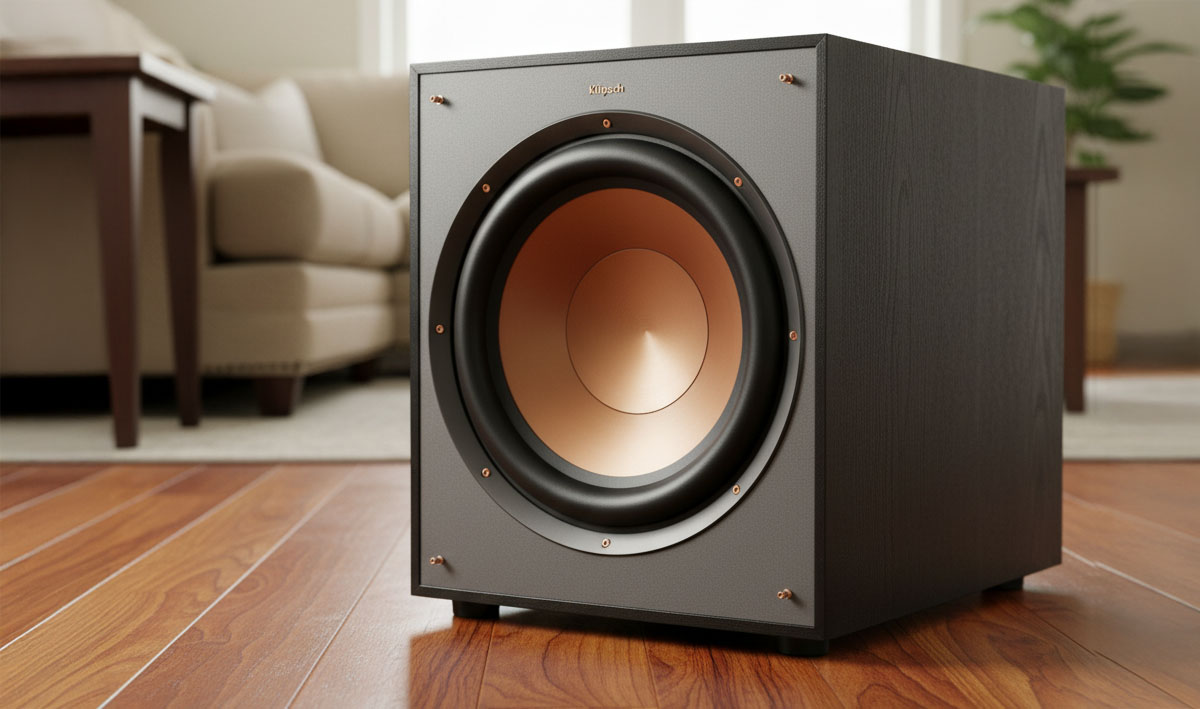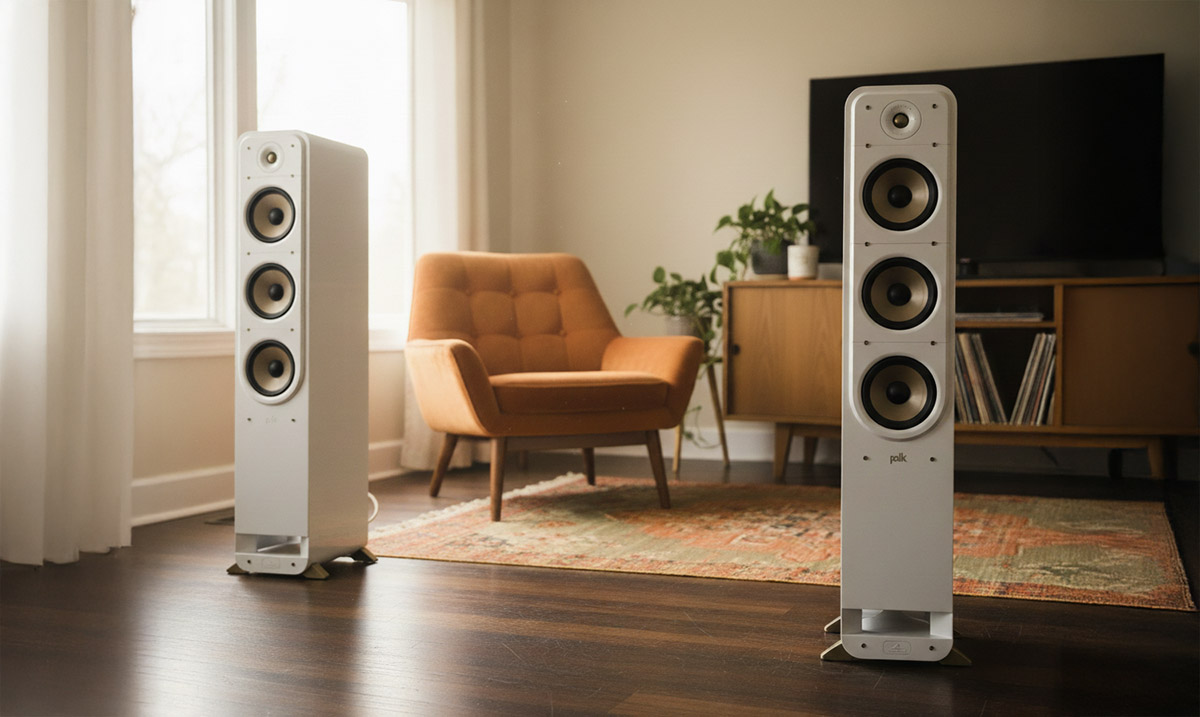Quick Take
The Polk Monitor XT60 is a slim tower that delivers a bigger, fuller presentation than its footprint suggests. Owners repeatedly praise its clear highs and surprisingly confident bass, especially for TV and movie use. The tradeoffs aren’t shocking: sensitivity is modest, so they like a decent amp; placement matters; and in lively rooms the top end can read a bit forward until you dial in toe-in and room treatments. Get those basics right and the Monitor XT60 behaves like a grown-up anchor for a starter surround system or a simple two-channel rig.
Pros
![]() Satisfying bass and crisp treble from a compact cabinet
Satisfying bass and crisp treble from a compact cabinet
![]() Easy physical setup, simple to integrate with mainstream receivers
Easy physical setup, simple to integrate with mainstream receivers
![]() Clear dialogue and convincing scale for movies and streaming
Clear dialogue and convincing scale for movies and streaming
![]() Strong value for rooms where space and aesthetics matter
Strong value for rooms where space and aesthetics matter
Cons
![]() Modest sensitivity; sounds better with a competent AVR or integrated
Modest sensitivity; sounds better with a competent AVR or integrated
![]() Can read bright or flat if placement is off or room is reflective
Can read bright or flat if placement is off or room is reflective
![]() Needs a little breathing room and toe-in to image at its best
Needs a little breathing room and toe-in to image at its best
Introduction
Polk built the Monitor XT60 for people who want the scale of floorstanders without redecorating the room around them. The formula is straightforward: a 1-inch Terylene dome tweeter for extended top-end clarity, a 6.5-inch mid-bass driver for body, and two 6.5-inch passive radiators to pull deeper bass from a slender box. On paper it reaches down into the upper 30s and up to 40 kHz, with sensitivity around 86 dB and a recommended power window that covers common home-theater receivers. In practice, it’s a “plug in, toe-in, and go” tower aimed at small to medium spaces where dialogue intelligibility and a sense of weight are more important than nightclub SPL.
Key Features of the Polk Monitor XT60
The Terylene dome tweeter’s extended bandwidth isn’t about chasing ultrasonic fairy dust. It correlates with the “air” and clarity owners often mention, especially in cymbals and sibilants. That matters for dialogue too, where crisp consonants live. The 6.5-inch woofer plus dual passive radiators is the other half of the story. Passive radiators act like air pistons tuned to reinforce bass without a long rear port. You get more low-end reach from a narrow cabinet, with less port chuff at volume. Push the speaker a bit closer to the wall and bass gets fatter; pull it forward a few inches and it tightens up. Finally, the cabinet bracing and proper binding posts are the boring details that keep tone from smearing when you turn the knob. Small parts that add up to “sounds bigger than it looks.”
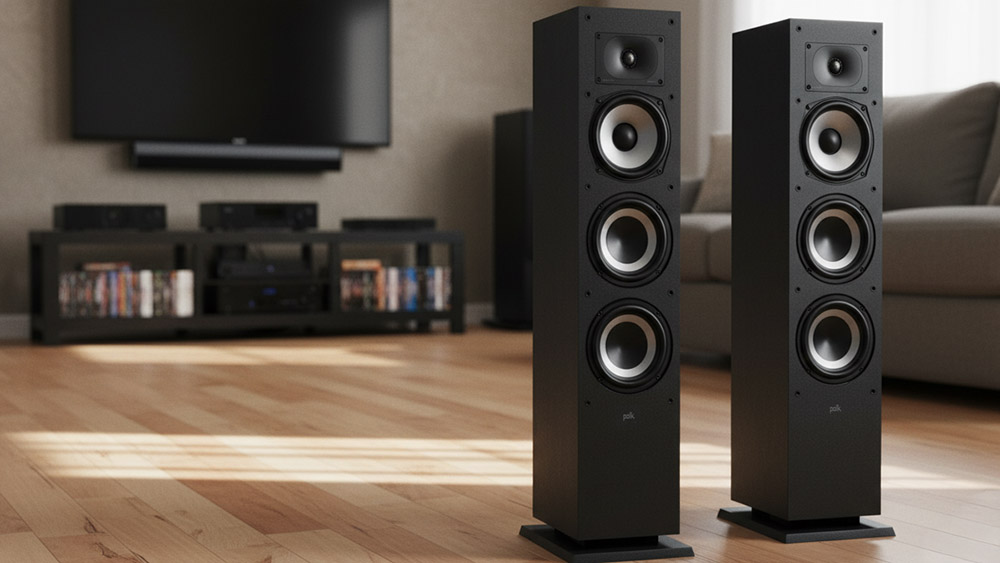
Sound quality and setup
Across hundreds of buyer comments, a pattern repeats. First, clarity: voices sit forward and intelligible, which is why many people drop the Monitor XT60 in front of a TV and feel like they upgraded their entire system overnight. Second, bass: the towers punch above their size. Explosions and basslines have real presence without leaning on a sub, although a sub will still win for that last octave. Third, ease: most folks wire, toe-in slightly, and are happy.
Now for the caveats. A minority of owners describe a flatter presentation in certain rooms. That split is classic boundary and toe-in behavior. If imaging feels two-dimensional, pull each tower 8 to 16 inches off the back wall, keep them 6 to 8 feet apart, and toe them in so the tweeters cross just behind your head. That simple placement shift usually snaps the center image into focus and lifts midrange presence. If the treble feels hot in a reflective room, ease the toe-in or add soft surfaces at first reflection points. A small rug, curtains beside the screen, and a filled bookcase do more than EQ alone.
Power is the other lever. With sensitivity around 86 dB, the XT60 appreciates a reasonably stout AVR or integrated amp. In a medium room with an 8 to 10-foot listening distance, an honest 80 to 100 watts per channel is plenty for cinematic peaks. If your receiver is modest, expect to turn the volume higher than you would with a high-efficiency horn tower. That’s normal, not a flaw.
RELATED: Polk Monitor XT70 Review
Against similarly popular towers
Compared to common alternatives in this tier, the XT60’s calling card is low-end fullness from a slim box. Some users of competing towers with smaller dual woofers point to airy clarity but admit bass can feel lean without a sub. Others who favor high-sensitivity designs rave about dynamics per watt but acknowledge bass depth isn’t the same as dual-woofer or passive-radiator layouts. The Polk lands in the middle: not the loudest per watt, not the leanest either, and very approachable in typical living rooms.
Sony SS-CS3
A 3-way tower with dual 5.12-inch woofers and a super-tweeter, rated 45 Hz to 50 kHz, 6 ohms. Owners often praise clarity and an open top end, while a not-small number note limited bass depth and a tendency toward a leaner balance unless paired with a sub. Compared with the Polk XT60, the Sony feels airier and can sound very crisp, but it doesn’t project the same low-end body from the cabinet alone. Choose the Sony if you’ll run a sub most of the time and prize treble clarity; choose the Polk if you want more fullness from a slim tower without relying on a sub for everyday use.
Klipsch R-610F
A high-efficiency design using a horn-loaded 1-inch tweeter and single 6.5-inch woofer, typically rated around 45 Hz to 21 kHz, 8 ohms, 94 dB sensitivity. Users love the jump factor and room-filling energy even with modest power. Bass depth is decent for a single-woofer tower but not the calling card; some listeners also mention a brighter balance in reflective rooms. Versus the XT60, the Klipsch is louder per watt and more forward up top; the Polk trades efficiency for a thicker low-mid and bass foundation from its passive radiators. Pick the Klipsch if your amp is small and you want dynamics; pick the Polk if you want a more relaxed treble and extra low-end body from a compact footprint.
Jamo S 805
A compact tower with a 1-inch soft dome and single 5-inch woofer, typically rated to the upper-40s/low-50s Hz with sensitivity around the high-80s. Owners highlight the size, smooth midrange and friendly placement, especially near walls. It’s an elegant, space-saving option, though it won’t reach as deep as the XT60 on paper or in most rooms. If you’re working with very tight quarters and prefer a slightly warmer balance, the Jamo is appealing; for more bass authority from a small footprint, the Polk has the edge.
Who is it for?
You’ll like the Monitor XT60 if you want a clean, confident front stage on a sensible budget and your room is small to medium. It’s a great match for mixed TV, movies, and casual music where dialogue and weight matter more than reference-level volume. It’s also ideal if you plan to build out a matching family over time with a center, surrounds, and a sub. If you live for very high playback levels from a tiny amp, a more efficient tower is a better fit. If you sit far away in a big, open concept space, plan on adding a sub earlier in your upgrade path.
Practical tips that actually help on day one
Start with placement. Give the XT60s a hand-width of space from side furniture and 8 to 16 inches from the back wall. Begin with a gentle toe-in and adjust until a centered voice “locks” even when you move your head a bit. If bass is boomy, slide each cabinet forward two or three inches. If it’s too dry, nudge them back or bring them a touch closer together.
Next, run your room correction, but don’t stop there. If you add a sub, set the fronts to “Small” and begin the crossover at 80 Hz. If dialogue thins, try 70 Hz; if bass localizes to the sub, try 90 to 100. Re-run correction after any move. Finally, confirm you’re not in a pure “Direct” mode that bypasses bass management by accident. These five minutes of sanity checks solve half the complaints people post online.
If the treble still reads bright, a two-part fix works: soften first reflections with fabric and reduce toe-in slightly so you’re listening a little off axis. If floors flex or you have an upstairs room, add inexpensive rubber isolation pucks under each plinth. That tames bass smear from cabinet-to-floor energy transfer.
Final Thoughts
The Polk Monitor XT60 earns its keep by making smart engineering choices in service of real rooms. The tweeter delivers intelligibility; the passive radiators give a slim tower believable bass; the cabinet stays composed when it counts. You do have to meet it halfway with sensible placement and an honest amp. Do that and you’ll hear why so many owners feel like they upgraded their whole system with one box per side. If you need maximum loudness from minimal power, a high-efficiency tower will be more your style. If you prefer a leaner, ultra-airy balance and plan on a sub anyway, a dual-woofer 3-way can make sense. For everyone else, the Polk lives in the sweet spot: easy to place, easy to like, and easy to build around.
FAQ
Do these towers need a subwoofer?
Not for casual TV and music. Many listeners are surprised at the XT60’s bass weight in everyday use. If you want the lowest octave in action movies or organ tracks, a sub still extends performance.
How much power do they really need?
With sensitivity around 86 dB, they appreciate a receiver or integrated with honest power. In a medium room at 8 to 10 feet, something rated in the 80 to 100 watts per channel range is a comfortable match.
How far from the wall should I place them?
Start with 8 to 16 inches and adjust. Closer yields more bass, farther gives tighter definition. Use small toe-in changes to focus the center image.
Can I run them close to furniture or a TV stand?
Yes, but leave a hand-width of space on the inside edges and avoid hard, reflective surfaces right beside the tweeters. A small absorber or even fabric decor can calm early reflections.
Do grilles change the sound?
Slightly. The safest bet for critical listening is with grilles off. For everyday viewing and to protect drivers, grilles on is fine.
Is there a break-in period?
Suspension compliance can loosen a touch in the first dozen hours. You’ll notice more from placement and toe-in than from waiting a week, though.
What if they sound a bit bright?
Reduce toe-in so you’re listening slightly off axis, add a small rug, and treat first reflections with soft fabric. Those tweaks are cheap and effective.
What’s the simplest upgrade path?
Start XT60 as your fronts. Add a matching center and a single sub. If the room or habits grow, add height channels or a second sub before considering bigger towers. That sequence removes the biggest bottlenecks first.
Teksignal.com participates in the Amazon Services LLC Associates Program, an affiliate advertising program designed to provide a means for sites to earn advertising fees by advertising and linking to Amazon.com. The reviews on this site are hands-off consensus reviews. We analyzed owner feedback across the internet and manufacturer documentation. We summarize sentiment; we do not republish individual user posts.

